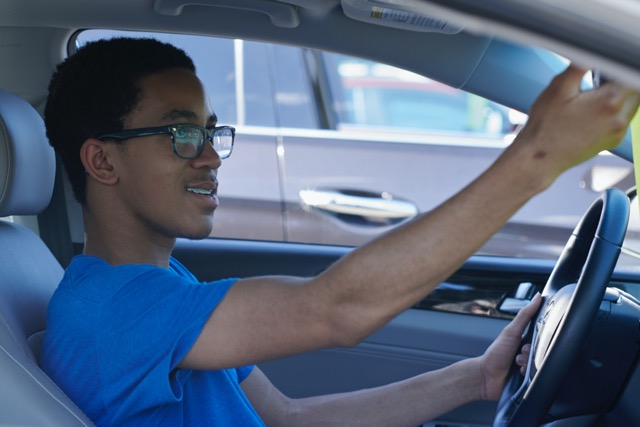Want a car that’s safe, reliable, and affordable? Want a million bucks? The former is more likely than the latter thanks to the annual list of recommended gently used cars released by the IIHS and Consumer Reports on Wednesday.
The list targets parents shopping for teen drivers but it applies to anyone looking for a safe, reliable, used car that costs less than $20,000. Seven Toyota models qualify for the “Best” tier of choices, while four Mazdas qualify, representing two-thirds of the small automaker’s lineup.
This year, 58 models qualify for the consumer advocates’ recommendations, up from 46 on last year’s safer newer cars list. In addition, all vehicles on the list have at least an “Acceptable” rating on a driver-side front crash test, and the top tier of vehicles come with automatic emergency braking proven to slow or stop a car before impact with another vehicle. The IIHS finds that such technology cuts front-to-rear crashes in half. Last year, more than 95% of new vehicles made came with the technology as standard.
In addition, market forces have helped inflate this year’s list.
“Vehicles continue to get safer, and for the first time since the pandemic-era disruptions, prices on the new and used market have stabilized,” said Jennifer Stockburger, director of operations at CR’s Auto Test Center. “These trends have enabled us to point families to even better options this year.”
Even though traffic fatalities decreased in 2023 for the first time in years, down to 40,990 fatalities from a record 42,915 in 2021, teen crash rates still occur at nearly four times those of other drivers. The number of fatalities involving a teen driver—which had been the highest cause of death for children through the age of nineteen until it was recently surpassed by firearm-related deaths—was 5,339 in 2022, according to the National Safety Council.
The IIHS and Consumer Reports recommend cars based on sensible safety factors in addition to ones equipped with certain technology. They stress shoppers to avoid high-horsepower cars that can tempt even the best humans to do dumb things. The full list also excludes small cars that weigh less than 2,750 pounds, which offer less crash protection. On the other end of the spectrum, bloated full-size SUVs or trucks are omitted for how long it takes them to stop and for handling that’s harder to control. They’re also much harder to park in school parking lots.
Additionally, the recommended vehicles below must have:
- Above-average reliability, based on CR consumer surveys
- Average or better scores on CR’s emergency handling tests
- Good dry braking test results
- Top “Good” ratings in four crash tests by the IIHS
- At least an “Acceptable” rating in the IIHS small overlap test that simulates a head-on collision
- At least a four-star safety rating from the NHTSA
Rounded to the nearest $100 for the base model, the prices are all pulled from Kelley Blue Book fair purchase prices as of April 19, 2024, but they exclude the mandatory destination fee.


Safest used car recommendations
Best Used Choices (with standard emergency braking rated “Advanced” or better)
Small cars
- $10,600: Toyota Corolla sedan (2017 or newer); hatchback (2019)
- $13,800: Toyota Prius (2017 or newer)
- $16,400: Mazda 3 sedan or hatchback (2021-2022)
- $17,000: Toyota Prius Prime (2017 or newer)
- $17,600: Honda Civic sedan or hatchback (2021 or newer)
Midsize and large cars
- $9,600: Toyota Camry (2018 or newer)
- $10,200: Volvo S60 (2017, 2021)
- $12,300: Volvo V60 (2017, 2021)
- $14,400: Toyota Avalon (2017 or newer)
- $14,700: Subaru Legacy (2019)
- $17,200: Hyundai Sonata (2021)
- $19,200: Honda Accord (2020)
Crossover SUVs, minivans, and trucks
- $12,100: Volvo XC60 (2017)
- $13,800: Chevrolet Equinox (2020, 2023)
- $14,400: Kia Sportage (2020 or newer)
- $14,700: Toyota RAV4 (2017 or newer)
- $14,900: Hyundai Tucson (2020 or newer)
- $15,200: Hyundai Santa Fe (2019, 2020, 2023)
- $15,700: Toyota Highlander (2017 or newer)
- $15,900: Nissan Murano (2019, 2020)
- $16,100: GMC Terrain (2020, 2023)
- $16,700: Ford Edge (2020 or newer)
- $17,100: Lexus NX (2018-21)
- $17,600: Mazda CX-5 (2021-23)
- $17,800: Infiniti QX60 (2019)
- $18,100: Lexus UX (2019-21)
- $18,700: Honda CR-V (2020 or newer)
- $18,800: Mazda CX-9 (2020, 2022)
- $19,000: Nissan Rogue (2021)
- $19,000: Subaru Forester (2021 or newer)
- $19,100: Toyota Sienna (2018-20)
- $19,900: Mazda CX-30 (2022 or newer)


Good Used Choices
Small cars
- $5,800: Mazda 3 sedan or hatchback (2014-17; built after October 2013)
- $7,100: Ford C-Max Hybrid (2015-16)
- $7,900: Honda Civic sedan (2014)
- $9,400: Toyota Prius (2014-16; built after November 2013)
- $13,200: Subaru Impreza sedan or wagon (2019-20)
Midsize and large cars
- $8,400: Mazda 6 (2015-17)
- $9,000: Toyota Camry (2014-17; built after December 2013)
- $10,200: Toyota Prius v (2015-17)
- $10,500: Honda Accord coupe or sedan (2015-17)
- $11,600: Subaru Legacy (2017-18)
- $12,600: Toyota Avalon (2015-16)
- $13,800: BMW 3-Series (2018)
Crossover SUVs
- $9,900: Nissan Murano (2016)
- $10,100: Mazda CX-5 (2016)
- $11,000: Hyundai Kona (2018-19)
- $11,400: Honda CR-V (2015-19)
- $11,600: Chevrolet Equinox (2018-19)
- $11,600: Honda HR-V (2017-22; built after March 2017)
- $11,700: Toyota Highlander (2014-16)
- $12,000: Toyota RAV4 (2015-16; built after November 2014)
- $12,100: Lexus NX (2015-17)
- $12,600: Toyota Sienna (2016-17)
- $12,700: GMC Terrain (2018-19)
- $13,500: Acura RDX (2016)
- $14,200: Mazda CX-9 (2018)
- $14,400: Honda Odyssey (2017)
